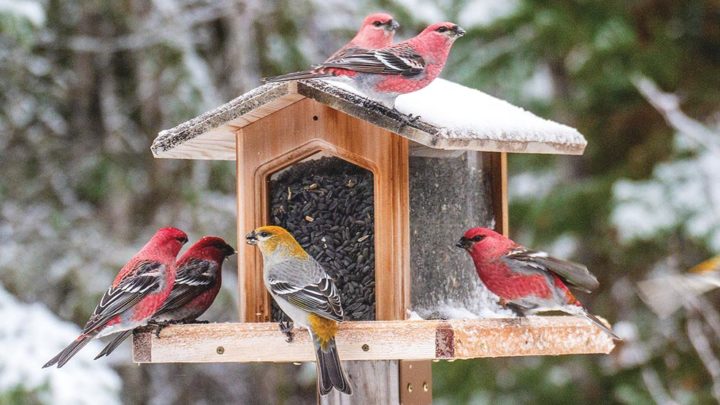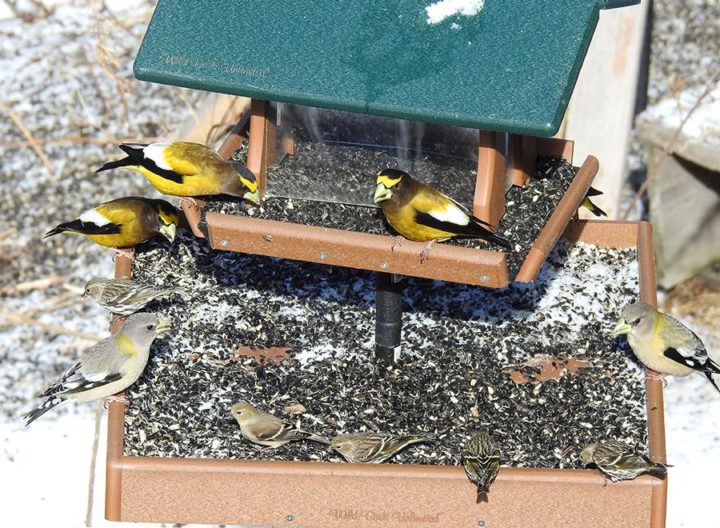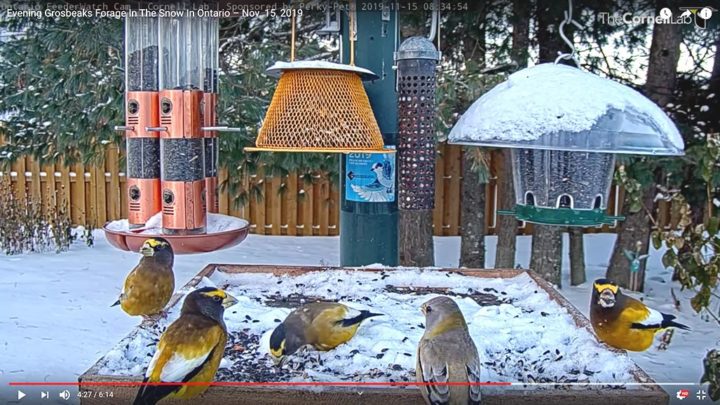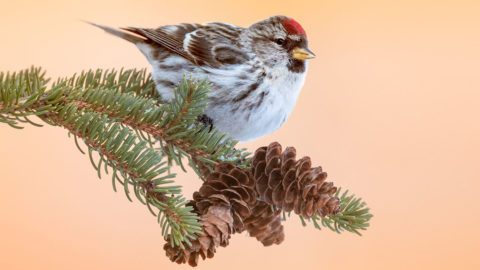Where to See Winter Finches in a Non-Irruption Year
By Marc Devokaitis
January 9, 2020
From the Winter 2020 issue of Living Bird magazine. Subscribe now.
This article originally appeared in print as a sidebar to How Ron Pittaway Developed His Acclaimed Winter Finch Forecast.
Even in years when winter finches don’t come south, there are still a few spots in the eastern and midwestern U.S. where birders can get their winter-finch fix—even in a non-irruption year.
Minnesota’s Sax-Zim Bog
Located about an hour’s drive northwest of Duluth, this famous birding bog has public bird feeders scattered about a network of usually plowed roads. Even in non-irruption years, the Sax-Zim bird feeders often have Evening and Pine Grosbeaks and Pine Siskins. To pick up a map with marked locations for bird feeders and check on the latest sightings, stop in at the Sax-Zim Bog Welcome Center (8793 Owl Avenue, Toivola, Minn…yes, that’s “Owl” Avenue—Sax-Zim is also a spectacular place to see Great Gray and Snowy Owls).
Ontario’s Algonquin Provincial Park
About a 3-hour drive north from the international border at Watertown, New York, or 3.5 hours northeast of Toronto, Algonquin is a virtual lock for winter finches every winter. At the Algonquin Visitor Centre (km 43 along Highway 60), birders can enjoy hot soup and coffee in the cafeteria while looking out the windows at bird feeders that are a good bet for Evening Grosbeaks. Elsewhere in the park along Highway 60 there are typically reports of crossbills (both Red and White-winged) and Pine Siskins.

New York: Paul Smith’s College in the Adirondack Mountains
Adirondack Park’s expansive, high-elevation forests with loads of conifer trees make the region a winter refuge for many seedeating bird species. From December to March, the Visitor Interpretive Center at Paul Smith’s College (8023 State Route 30, Paul Smith, New York) is open on weekends and holidays and features art exhibits, interpretive programs, natural history information, and a feeder station that regularly attracts Purple Finches, Red-breasted Nuthatches, and Evening Grosbeaks. Bring snowshoes or cross-country skis to search the 25 miles of trails in the surrounding woods for Black-backed Woodpeckers and Ruffed Grouse.

And For Everyone Else, There’s Always Our Bird Cams
If the thought of braving winter weather to see these colorful birds leaves you cold, consider tuning in to the Cornell Lab of Ornithology’s Ontario Feederwatch Cam, streaming live from November through April. From their home in Canada, hosts Tammie and Ben Haché keep their suite of feeders filled to the brim to provide a feast for hordes of Pine Grosbeaks, Evening Grosbeaks, and Common and Hoary Redpolls. Canada Jays, Ruffed Grouse, and Common Ravens also make regular appearances on the high-definition camera feed. Check out the Ontario Feederwatch Cam.

All About Birds
is a free resource
Available for everyone,
funded by donors like you
American Kestrel by Blair Dudeck / Macaulay Library


